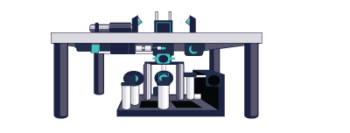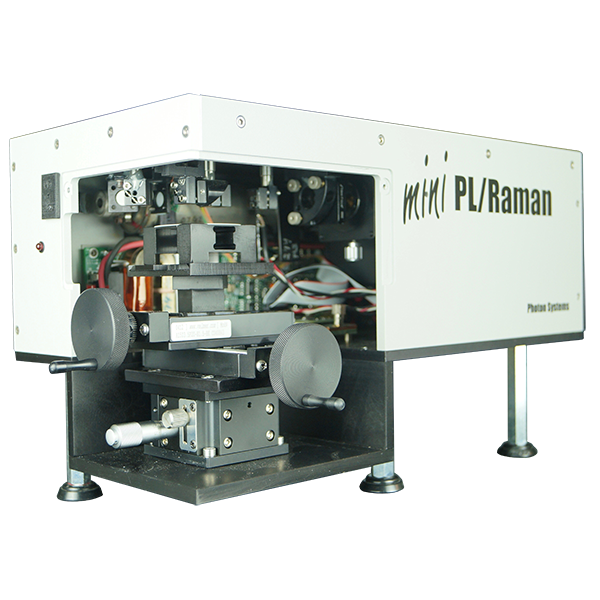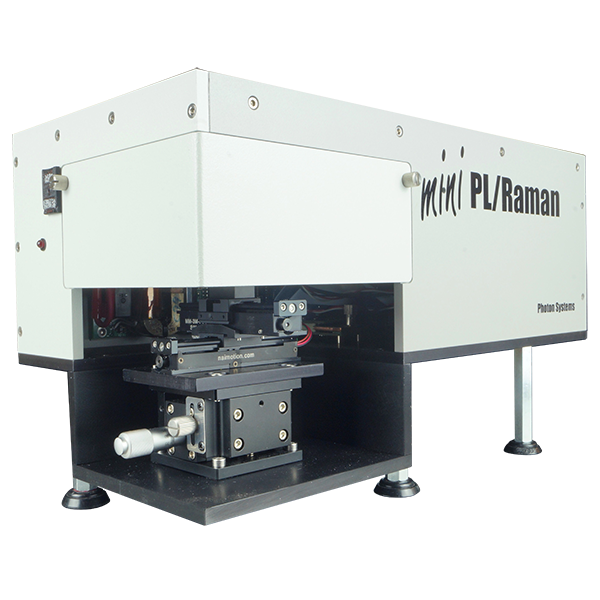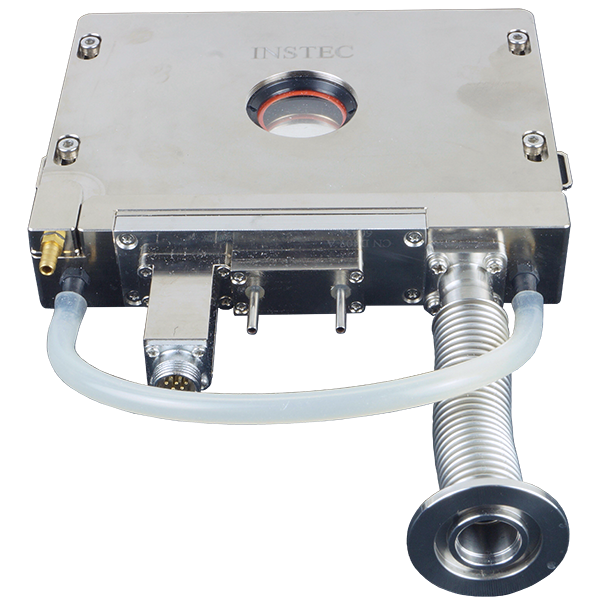The Mini PL 110 Deep UV Photoluminescence Spectrometer is a miniature instrument employing a scanning monochromator with detector with gated boxcar integrator and averager with a nearly 7-decade dynamic range.
Key Features
- Deep UV excitation at 224 nm (5.5 eV) or 248.6 nm (5.0 eV)
- Highly portable: only 15 x 18 x 36 cm
- Digital PMT Controller: Gated box car integrator and averager for low noise digits PMT output measurement.
- Analysis Software Included: FWHM, Peak, Side Lobe ID, Spectral Subtract, Normalize software included
Measurement of photoluminescence (PL) spectra from wide bandgap semiconductor materials is an important characterisation method and is widely accepted. These measurements are important both for research, device characterisation, and manufacturing process monitoring and control.
The need for deep UV PL systems is driven by the increasing market size for wide bandgap semiconductors driven by the need for high power and high temperature devices, deep UV LEDs, and solar blind detectors.
The Mini PL 110 was designed originally for mapping wide bandgap semiconductors. The instrument comes with a laser emitting 248nm (5.0 eV) or 224nm (5.5 eV) photons for use with AlGaN and other similar semiconductor materials. It also includes a monochromator, detector, optics and electronics operated with a separate notebook computer.
This instrument has options for LN2 and LHe sample cooling stages as well as motorised XY mapping stages with sub-micron resolution.
In addition to PL spectra, the Mini PL 110 Deep UV Photoluminescence Spectrometer can also be used for Raman analysis with a 35 cm-1 resolution. However, the Mini PL 110 uses a monochromator and not a spectrograph. The spectrum is generated by detecting each spectral increment separately and sequentially, unlike a spectrograph, which detects the entire spectrum at once.
Before taking a spectrum, you can select the spectral step size between spectral increments and change the number of laser pulses which are averaged at each spectral increment to obtain the desired signal to noise ratio (SNR).
When using the Mini PL 110 system it is beneficial to limit the spectral range to only the region of interest, use the widest spectral step size possible and use the smallest number of laser pulses possible since these factors can dramatically affect the time it takes to obtain a spectrum.
If you need to take complete Raman spectra and/or need higher resolution, then we recommend our Raman PL 200, which is a spectrograph based system including a 3 stage cooled CCD detector. It can quickly generate full Raman spectra at much higher resolution.


































